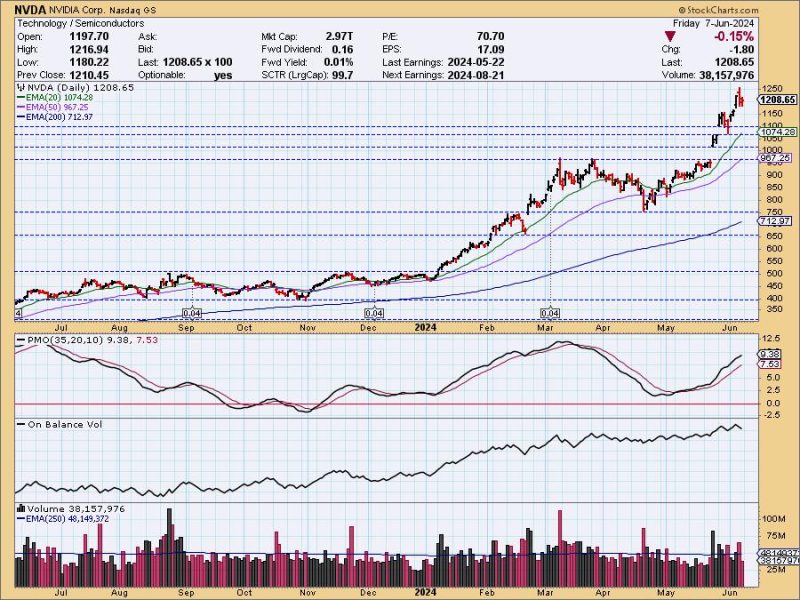NVIDIA’s Stock Split and Potential Correction: What Investors Need to Know
Overview and Impact of NVIDIA’s Stock Split
NVIDIA, a leading technology company known for its innovative graphics processing units (GPUs) and artificial intelligence solutions, recently announced a 4-for-1 stock split. This move comes as Nvidia’s stock price soared to new heights, prompting the company to adjust its share price to make it more accessible to retail investors.
A stock split is a corporate action in which a company increases the number of its outstanding shares by dividing the existing shares into multiple shares. In Nvidia’s case, for every share held by an investor, they will receive three additional shares, effectively reducing the price per share by a quarter.
The primary objective of a stock split is to make the stock more affordable to a broader range of investors. By lowering the price per share, a stock split can attract more retail investors who may have been previously deterred by the high price of the stock. This increased accessibility can lead to higher trading volumes and liquidity, potentially boosting the stock’s overall value.
Historically, stock splits have been viewed positively by investors as they signal confidence from the company’s management regarding future growth prospects. The psychological impact of a stock split can also generate positive sentiment among investors, driving up demand for the stock.
Investor Sentiment and Potential Correction
While stock splits often result in a temporary boost in share price, investors should be cautious of potential market corrections following the split. The surge in price leading up to the split may not be sustainable in the long term, and the stock could experience a pullback as the market adjusts to the new share structure.
In the case of Nvidia, investors should consider the broader market conditions, as well as the company’s fundamentals, before making investment decisions. While the stock split may create short-term excitement and drive up the share price, the underlying strength of the company’s business operations and growth prospects will ultimately determine the stock’s performance in the long run.
Additionally, investors should be aware of the potential impact of external factors, such as market volatility, economic indicators, and geopolitical events, on Nvidia’s stock price post-split. It is essential to conduct thorough research and consult with financial advisors to make informed investment choices and mitigate risks associated with market fluctuations.
Ultimately, Nvidia’s stock split presents an opportunity for both existing and prospective investors to capitalize on the company’s growth potential. By understanding the implications of the split and closely monitoring market dynamics, investors can position themselves strategically to navigate potential corrections and capitalize on the stock’s long-term performance.
Conclusion
In conclusion, Nvidia’s stock split has the potential to attract a broader investor base and generate positive sentiment in the market. However, investors should exercise caution and conduct due diligence to assess the stock’s valuation post-split and mitigate risks associated with market corrections. By staying informed and proactive, investors can make sound investment decisions and leverage Nvidia’s growth trajectory for long-term wealth creation.
